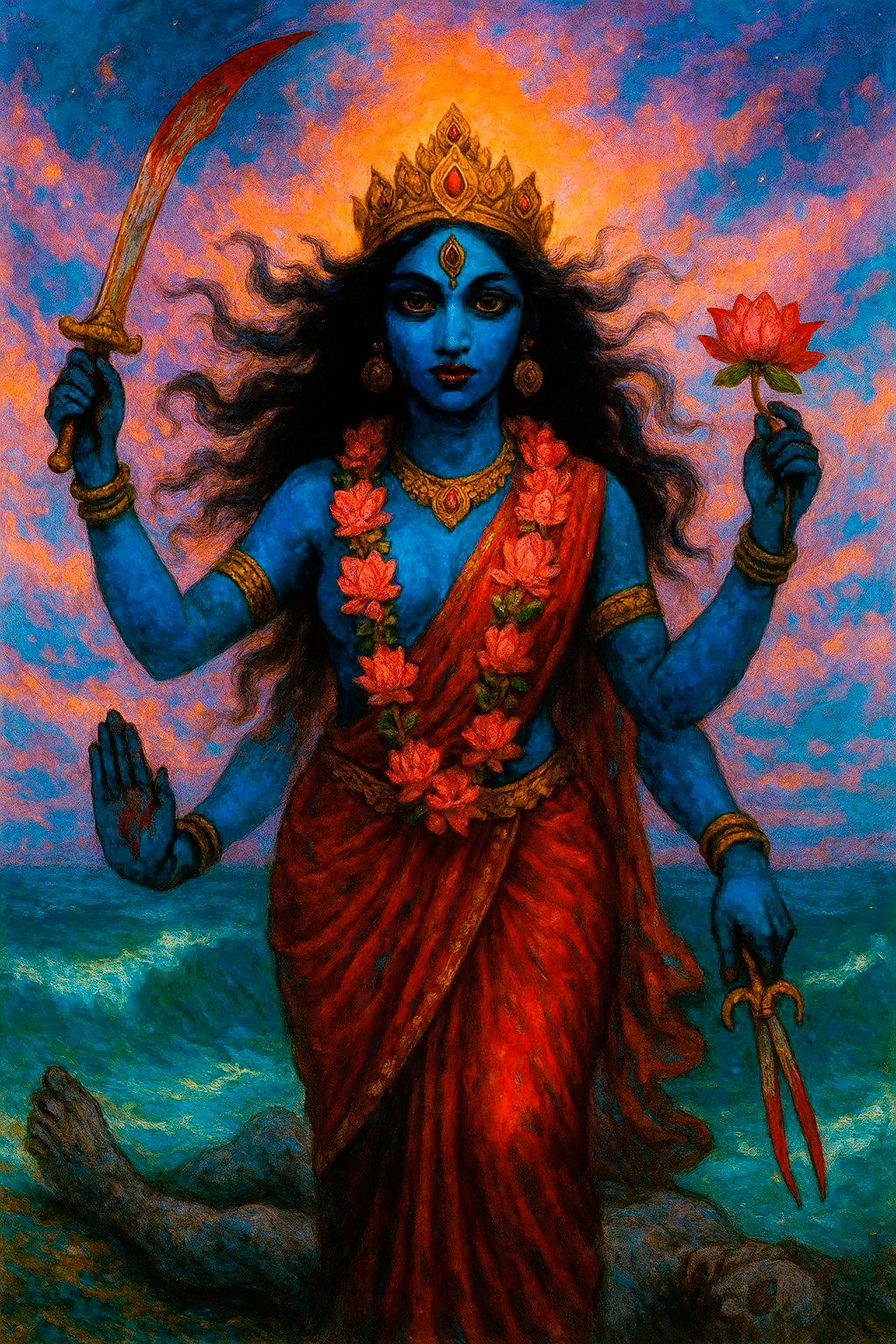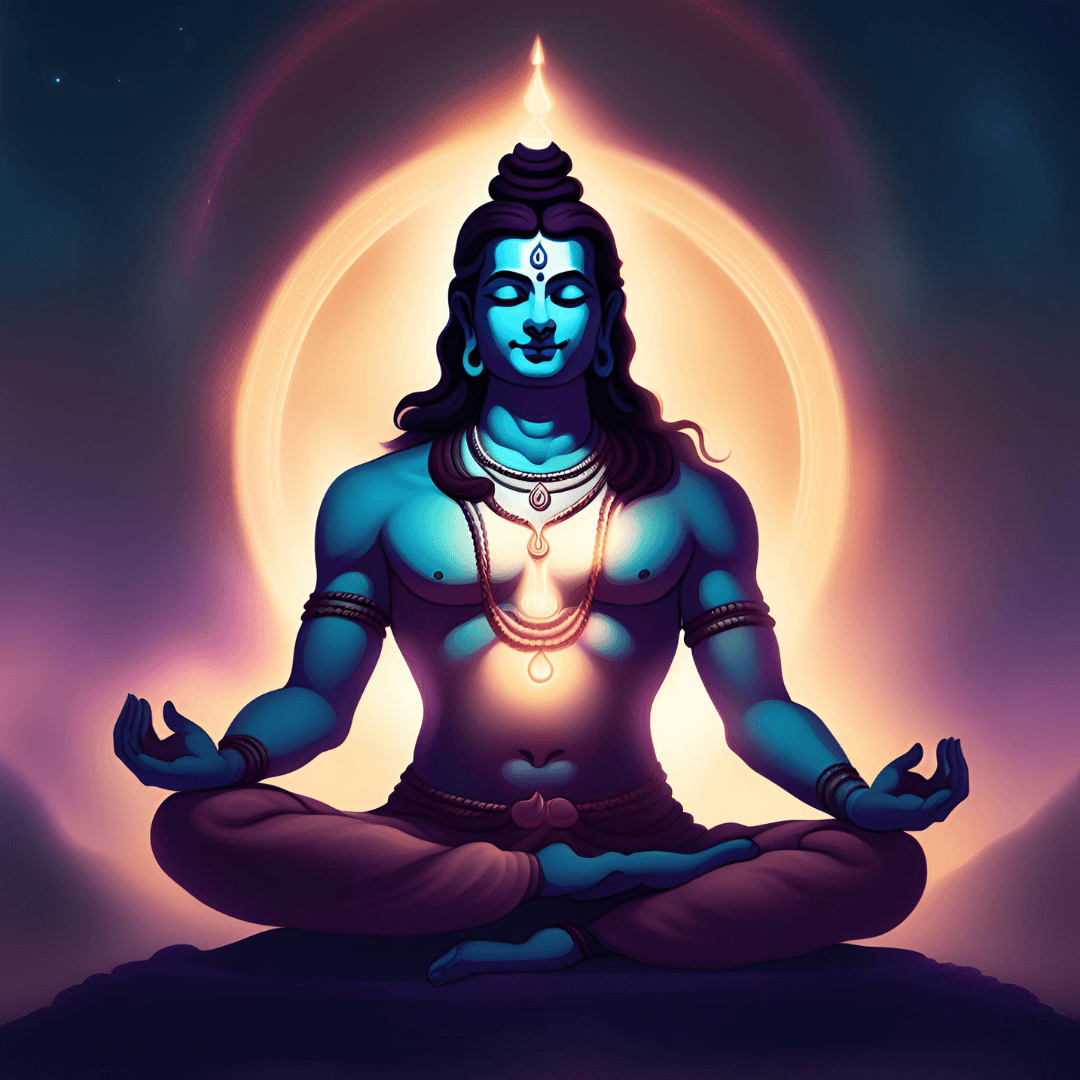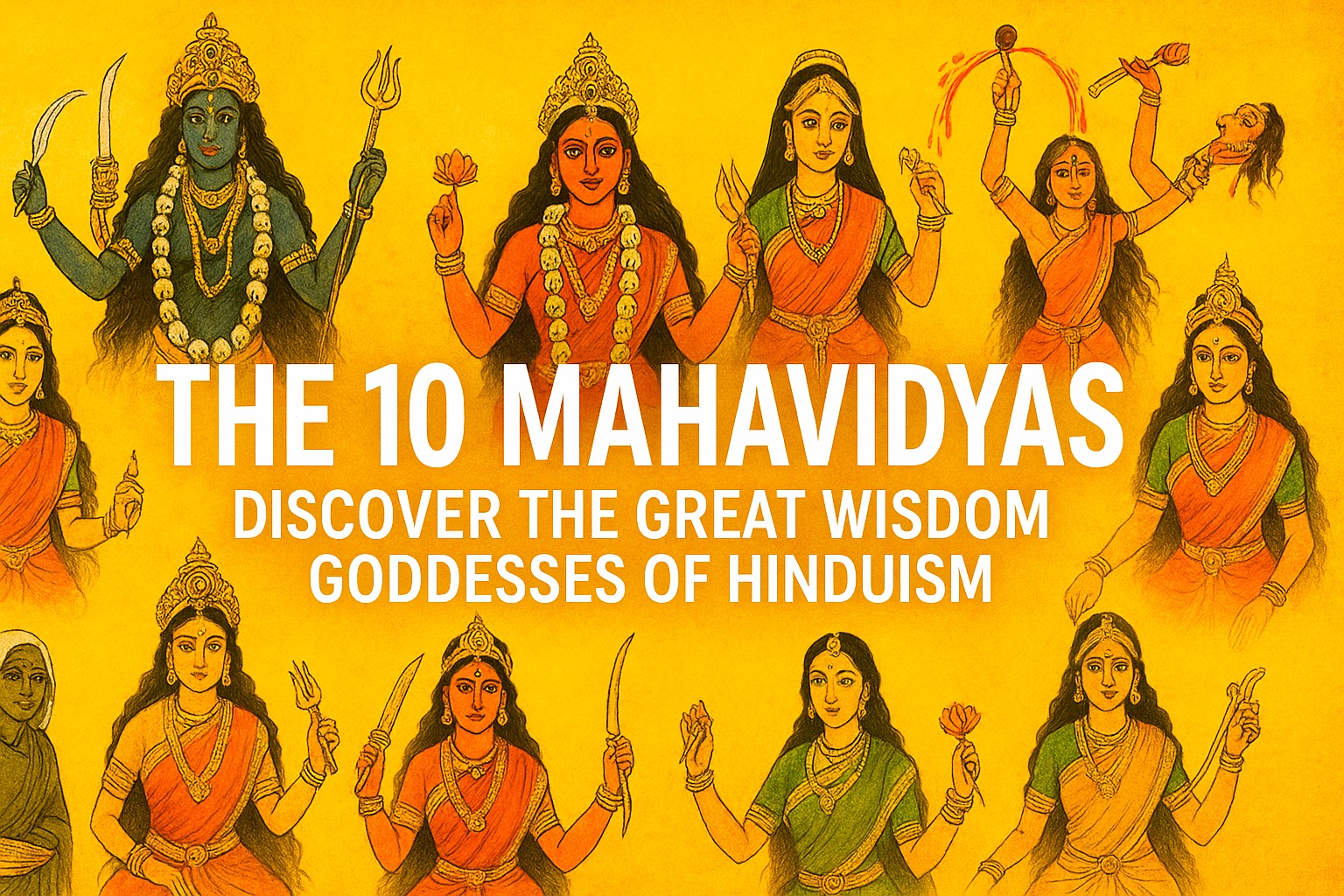Table of Contents
A Journey into the Sacred Feminine
Have you ever wondered about the many forms of the Divine Mother and what each represents? In Sanatan Dharma, the Goddess is revered as Shakti—the eternal cosmic energy that creates, sustains, and transforms the universe. To guide seekers, this infinite power reveals itself in different forms. Among the most profound of these are the 10 Mahavidyas—the Ten Great Wisdom Goddesses.
The word Mahavidya means “Great Wisdom.” Each goddess is a unique aspect of Shakti, symbolizing deep spiritual truths. Together, they embody every dimension of existence—fierce and gentle, destructive and nurturing, terrifying and compassionate.
According to legend, the Mahavidyas emerged when Goddess Sati transformed into her many powerful forms to convince Lord Shiva. From this divine moment arose the ten great goddesses who continue to inspire spiritual seekers with their lessons of courage, devotion, and self-realization.
Let us step into the world of the Das Mahavidya, where each goddess is a radiant teacher guiding us toward liberation (moksha).
Understanding the Mahavidyas
The 10 Mahavidyas are not just deities to be worshipped; they are also spiritual guides who reveal the mysteries of life, death, and the soul’s journey.
- They represent the dual nature of the universe: creation and destruction, beauty and fear, knowledge and detachment.
- Each Mahavidya teaches a unique path of wisdom, helping devotees overcome ignorance, ego, and worldly suffering.
- They are also linked to planets, chakras, and cosmic directions, making them deeply significant in both spiritual and astrological traditions.
By meditating upon and understanding the Mahavidyas, devotees can learn to face life’s challenges with courage, devotion, and clarity, while staying connected to the higher truth.
The Ten Mahavidyas – Forms of the Divine Mother
1. Kali – The Devourer of Time
When Lord Shiva lay down before Kali to stop her furious dance of destruction, she stepped on him. Realizing her mistake, Kali bit her tongue in shame. This image shows how she destroys ego and teaches humility.
Appearance: Dark-skinned, adorned with a garland of skulls, holding a sword, standing on Shiva.
Spiritual Significance: Kali represents time, death, and transformation. She destroys the ego and frees the soul.
Modern Connection: Teaches us to let go of fears and accept change as part of growth.
Mantra: Om Krim Kalikayai Namah
2. Tara – The Compassionate Guide
In the cosmic ocean of poison during Samudra Manthan, Maa Tara appeared to save the world. She nurtured Lord Shiva by feeding him, guiding devotees across suffering like a mother saving her child.
Appearance: Blue in color, holding a sword and a lotus, often standing on a corpse.
Spiritual Significance: Tara guides devotees across the “ocean of suffering.” She is compassion in its purest form.
Modern Connection: Symbolizes support during difficult times, like a guiding light in darkness.
Mantra: Om Taraye Namah

3. Tripura Sundari (Shodashi) – The Beauty of the Three Worlds
As the youthful goddess of supreme beauty, she represents bliss. The scriptures say she grants both material joy and spiritual liberation, teaching that true beauty lies in consciousness.
Appearance: Radiant, seated on a throne, holding a sugarcane bow and flower arrows.
Spiritual Significance: Embodiment of supreme beauty, bliss, and divine love. She represents ultimate consciousness.
Modern Connection: Teaches us to see inner beauty and live with balance and joy.
Mantra: Om Aim Hrim Shreem Shodashi Tripura Sundari Padukam Poojayami Namah
4. Bhuvaneshwari – The Queen of the Universe
When the universe expanded, it was Maa Bhuvaneshwari who spread her infinite form as space itself. She is the mother of worlds, reminding us that the cosmos is her divine body.
Appearance: Glowing like the cosmos itself, seated on a throne with four arms.
Spiritual Significance: She represents space, vastness, and the power of creation.
Modern Connection: Reminds us of our place in the universe and the importance of compassion.
Mantra: Om Hrim Shreem Bhuvaneshwaryai Namah
5. Bhairavi – The Fierce Warrior
Maa Bhairavi is described as the power behind time and death. Just as a storm clears away decay, she removes ignorance and negativity, protecting her devotees with fiery energy.
Appearance: Fierce red form, with weapons in her hands, riding a lion.
Spiritual Significance: Bhairavi destroys ignorance and awakens courage in devotees.
Modern Connection: Encourages us to face fears boldly and transform challenges into strength.
Mantra: Om Hrim Bhairavi Namah
6. Chhinnamasta – The Self-Decapitated Goddess
Once, while bathing with her attendants, her hungry companions asked for food. In compassion, Chhinnamasta severed her own head, and streams of blood fed her attendants. She teaches self-sacrifice and transformation.
Appearance: Headless, holding her own head, with blood streams feeding her attendants.
Spiritual Significance: Symbol of self-sacrifice, detachment, and transformation. She teaches control over desires.
Modern Connection: Inspires us to cut away attachments and embrace inner strength.
Mantra: Om Shreem Hreem Klim Aim Vajravairochaniye Hum Hum Phat Swaha
7. Dhumavati – The Widow Goddess
According to the scriptures, when Sati consumed herself in the Yagna fire of Daksha, she appeared later as Dhumavati, the smoke goddess. Old and wise, she teaches detachment and the power of emptiness.
Appearance: Old and veiled, riding a crow, symbolizing the void.
Spiritual Significance: She embodies detachment, stillness, and the wisdom that remains after all is gone.
Modern Connection: Teaches acceptance of loss and finding strength in solitude.
Mantra: Om Dhum Dhum Dhumavati Swaha
8. Bagalamukhi – The Power to Silence Negativity
When demons caused chaos through their powerful words, Maa Bagalamukhi appeared, pulling their tongues to silence their negativity. She represents control over harmful speech and energy.
Appearance: Golden complexion, pulling the tongue of a demon, seated on a throne.
Spiritual Significance: She paralyzes enemies and protects devotees from harm.
Modern Connection: Represents the ability to stop gossip, negativity, and destructive thoughts.
Mantra: Om Hleem Bagalamukhi Sarv Dushtanam Vacham Mukham Padam Stambhaya Jivham Kilaya Buddhim Vinashaya Hleem Om Swaha
9. Matangi – The Goddess of Art and Knowledge
Born as the daughter of a Chandala, Matangi shows that wisdom belongs to all, not just the privileged. She is the goddess of speech, arts, and inner truth, blessing devotees with creativity.
Appearance: Green-colored, playing the veena, resembling Saraswati.
Spiritual Significance: Patroness of wisdom, music, and creativity. She awakens the inner voice.
Modern Connection: Inspires artists, musicians, and learners to seek divine creativity.
Mantra: Om Hrim Shreem Nityaye Matangeshwari Shreem Hrim Phat
10. Kamala (Kamalatmika) – The Lotus Goddess of Prosperity
Similar to Lakshmi, Kamala sits on a lotus with elephants showering her with water. She blesses her devotees with wealth, fertility, and purity, reminding us that prosperity is sacred when rooted in dharma.
Appearance: Seated on a lotus, golden complexion, showering blessings.
Spiritual Significance: Goddess of wealth, abundance, and purity. Similar to Lakshmi but rooted in tantric tradition.
Modern Connection: Encourages us to seek both material prosperity and spiritual purity.
Mantra: Om Shreem Hreem Shreem Kamalatmikayai Namah
Conclusion – The One Mother, Many Faces
The 10 Mahavidyas are the ten faces of the same Divine Mother. From the fierce Kali to the gentle Kamala, they reveal the many dimensions of life and consciousness.
By meditating on their forms and understanding their significance, devotees can learn to overcome fear, embrace wisdom, and live with courage and compassion.
The journey of the Das Mahavidya is ultimately a journey inward—a path to discovering the infinite Shakti within ourselves.
💬Which of the Mahavidyas resonates most with you? Share your thoughts and experiences in the comments below.

